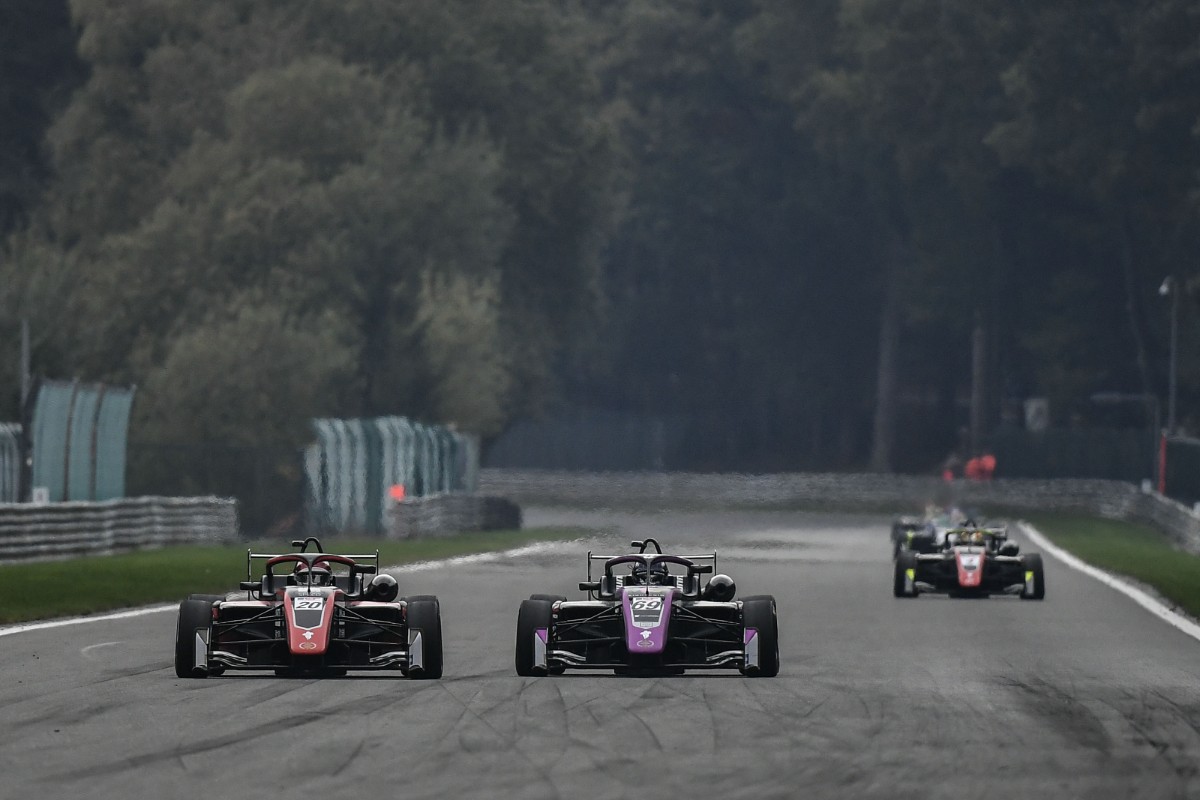
Photos: Fotospeedy
The Euroformula champion of 2020 may have scored 146 points more than the runner-up, but the standings belied a title battle that was actually way closer and was compromised by a pandemic-hit calendar
Before the Barcelona season finale, Lukas Dunner had actually outscored CryptoTower Racing Team team-mate Yifei Ye by 24 points in the 10 races they had been up against each other. But with the finale being expanded into a four-race round, it meant that if one driver had a clear advantage at the Catalan circuit then there was no coming back.
As it happened, Ye was in a class of his own at Barcelona and outscored his rival by 62 points with a perfect run of four wins, four poles and four fastest laps from the weekend. This, combined with the 108 points he scored in the two rounds that Dunner was absent from through FIA Formula 3 Championship commitments, meant he was champion by 121 points once dropped scores came into consideration.
Such a dominant margin of title success isn’t unusual in Euroformula, as in the era of the Dallara F312/317 there would often be drivers who just clicked with the car and romped to title success. But the introduction of the halo-shod Dallara 320 this year should have levelled the playing field, especially with the limited pre-season testing teams were able to undertake after the coronavirus pandemic arrived.
But Dunner’s two seasons of series experience and Ye’s time in FIA F3, Asian F3 and the Formula Renault Eurocup put the pair above most of their opposition when it came to learning the demands of Dallara’s latest single-seater design.
Dunner showed a record pace in the only ‘official’ pre-season test at Hockenheim, but his absence from the Hungaroring season opener – only after it and FIA F3’s second Silverstone round got pushed back by lockdowns to be on the same date – meant Ye got a head start that he made the most of with a perfect score.
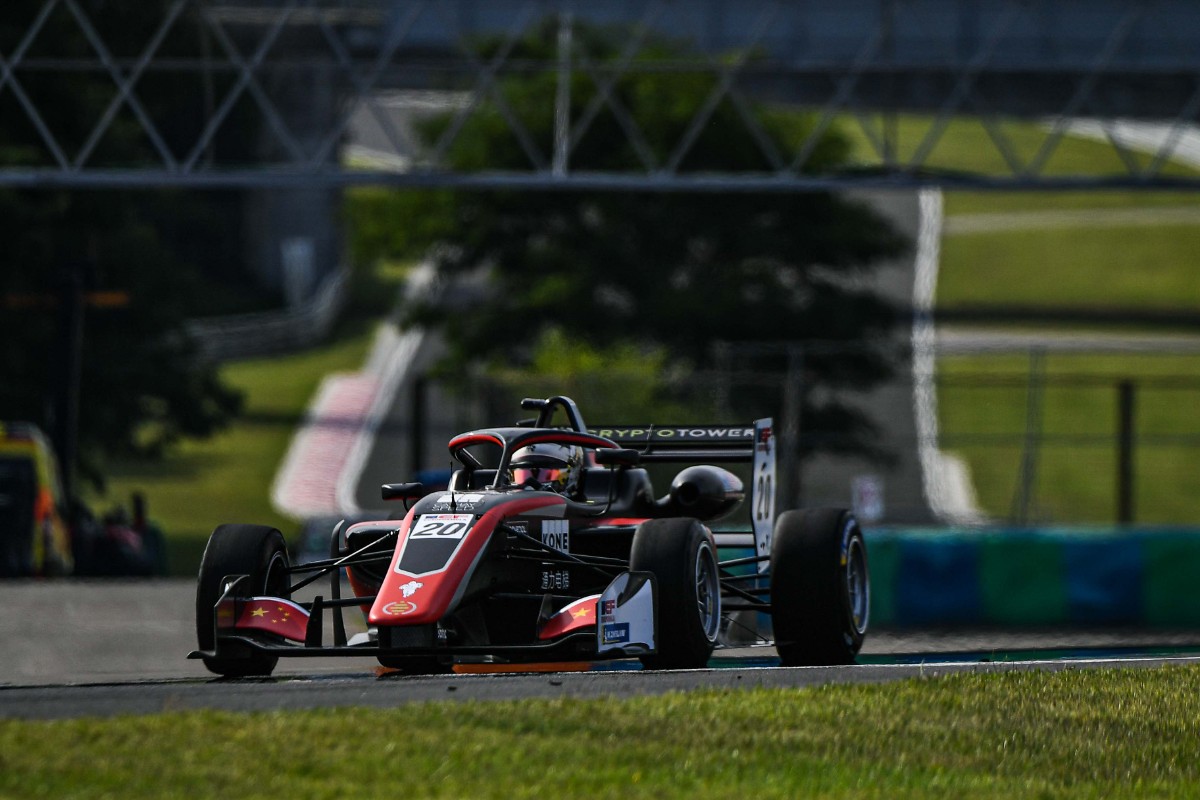 That dominance came as no surprise when his experience was factored in, but it was actually Van Amersfoort Racing’s Andreas and Sebastian Estner who looked faster on a greener track surface and were cleaner too before Ye’s very different and Motopark-influenced driving style came to the fore in qualifying and the races.
That dominance came as no surprise when his experience was factored in, but it was actually Van Amersfoort Racing’s Andreas and Sebastian Estner who looked faster on a greener track surface and were cleaner too before Ye’s very different and Motopark-influenced driving style came to the fore in qualifying and the races.
But Dunner’s arrival for round two at Paul Ricard would provide a proper challenge, and also be the start of a working relationship that was pushed to its limits like Lewis Hamilton and Nico Rosberg’s was in Formula 1 a few years ago.
In France there was little that could separate them besides the wind direction down the Mistral Straight, which ultimately decided how effective the slipstream effect was, and Ye had the upper hand on pace by 0.133 seconds. As a percentage of the absolute pace, that was a 0.117% difference between the two.
Dunner was gone again at the Red Bull Ring, as he prioritised the FIA F3 finale at Mugello, and Ye returned to dominance with another perfect score and a 111-point lead over Dunner after the first six races. At this point Andreas Estner was his closest rival in the standings, but he had less than half of Ye’s tally.
Two weeks later the paddock headed to Italy for back-to-back rounds at Monza and Mugello, and the fight between the two CryptoTower team-mates was unbelievably close once more.
Ye was fastest at Monza, this time by 0.096s over Motopark’s Niklas Krutten. Dunner was only 0.117s behind in the fastest of the qualifying sessions though, and that equated to a 0.113% difference. Qualifying at Monza is all about strategy, and CryptoTower’s one was to have Dunner and Ye giving each other tows after each lap. It worked for one session, however a loose moment for Dunner in Q2 threw the plan into disarray as it enabled Motopark driver Manuel Maldonado and CryptoTower’s third driver Rui Andrade to draw in and try to gain the same benefits.
 What ensued was madness, with Ye defending from Maldonado when he tried to pass but then not letting Dunner through until later in the lap than usual, then Andrade spinning off after he made a pass. Ye ended up quickest, but was penalised for his aggressive defence against Maldonado and it was Dunner who was put onto race two pole.
What ensued was madness, with Ye defending from Maldonado when he tried to pass but then not letting Dunner through until later in the lap than usual, then Andrade spinning off after he made a pass. Ye ended up quickest, but was penalised for his aggressive defence against Maldonado and it was Dunner who was put onto race two pole.
The plan just about remained in operation in Q3, in what was Euroformula’s first triple-header weekend, but Dunner was aggrieved that poleman Ye was the beneficiary of the tow at the very end of the session and the strategy was unformalised by the time they reached Spa-Francorchamps two rounds later.
In the first two Monza races each driver won from pole, with Ye not losing the lead once in a slipstream thriller in race one, but in race three it was Dunner who stood on the top step after he and then Krutten passed Ye mid-race and the Chinese driver had to fight his way back into second place.
There was limited dry running at Mugello the next weekend, and Sebastian Estner’s free practice benchmark ended up being the fastest lap of the weekend. In that session Dunner bettered Ye by 0.117s (0.121%) and had the upper hand over Ye in the wet and greasy conditions that inflicted most of the on-track action. It was quite likely an advantage gained by Dunner’s time spent in rallying and ice driving last year.
Dunner finished 15s and four places up on Ye in a storm-hit race one, then was almost 10s ahead in the damp race two.
Spa was another triple-header, and the fight at the front was the closest it had been yet – eventually too close – as there was a minuscule 0.016s (0.012%) difference between their respective pole laps for races two and three.
It was the marginally faster Dunner who claimed the pole for race one, but he could do nothing to stop being slipstreamed down the Kemmel Straight on the opening lap of the race and it took a few laps for him to come back at Ye for the lead. On most occasions he used the slipstream and then tried the outside of Les Combes, but couldn’t pass when Ye braked later, and on the one occasion he did get through he cut the chicane and allowed Ye back past. They finished 0.448s apart.
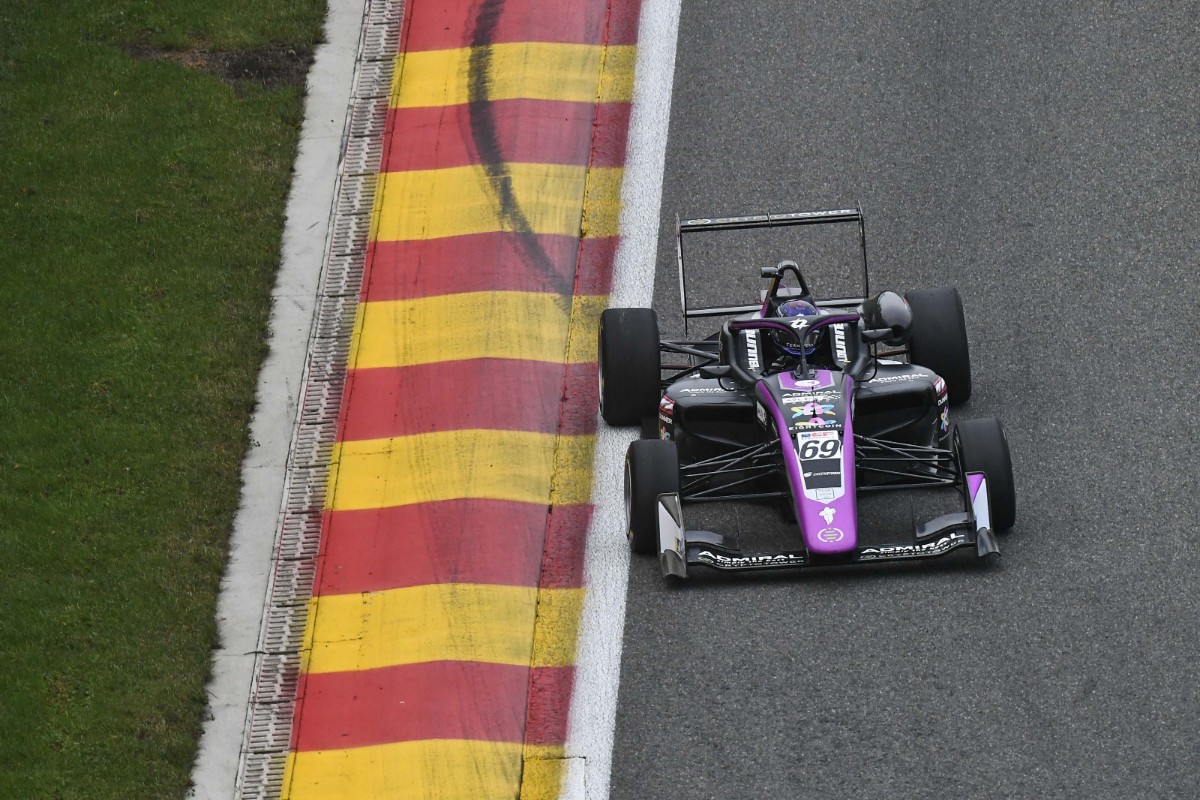 Dunner kept the lead for the whole of the opening lap of race two, but was passed by Ye just before a safety car interruption a few laps in. The lead swapped hands a further three times before Ye got right onto Dunner’s gearbox as they went up Eau Rouge. They were already too close to each other at the start of the Kemmel Straight given the speed advantage Ye would have behind, and they ended up making the slightest contact that pitched Ye into a spin and left Dunner with a puncture.
Dunner kept the lead for the whole of the opening lap of race two, but was passed by Ye just before a safety car interruption a few laps in. The lead swapped hands a further three times before Ye got right onto Dunner’s gearbox as they went up Eau Rouge. They were already too close to each other at the start of the Kemmel Straight given the speed advantage Ye would have behind, and they ended up making the slightest contact that pitched Ye into a spin and left Dunner with a puncture.
The chief beneficiary of this was Double R Racing’s debutant Louis Foster, whose mileage had been limited by crashing in practice, and he went on to take a surprise win – Double R’s first in Euroformula – as Ye and Dunner came 11th and 13th.
Race three was another dominant Dunner win as Ye had to fight his way back up to third after a frantic opening lap, but he now had one hand on the title with 108 points left to score and a 94-point lead.
The cancellation of the Jarama season finale led to Barcelona’s bursting schedule, and Foster remained in the series for the new finale as Drivex School brought along Formula 4 racer Rafael Villagomez and Motopark tester Matthias Luethen finally made his race debut.
The closest Dunner got to Ye in qualifying was 0.238s, but he was 0.315% off Ye and Maldonado ended up being the closest opponent on pace. With each race Ye became more dominant, even overcoming a five-second penalty for another defensive move to win race three, while Dunner only made the podium once and admitted he was making more errors than usual.
Had the Jarama round – on a circuit none of the drivers had tested on in F3-level machinery – been able to go ahead then possibly the final two races of the season would have looked a little different to two Ye wins and a fourth and a seventh for Dunner.
But there’s lots of what-ifs from the 2020 season. The Pau Grand Prix and the revival of the Mediterranean Grand Prix at Sicily’s Enna-Pergusa circuit both would have provided very different driving challenges had they not been cancelled as a result of the pandemic, and Hockenheim was also lost from the calendar as the circuit prioritised negotiations to bring back the German Grand Prix for F1 once the events it originally was hosting all had their dates cancelled during the pandemic.
 On average Ye was just 0.082% faster than Dunner, and while it looks like the latter is set for a second season in FIA F3 it does not seem likely that the Euroformula champion’s single-seater dream will continue in 2021. He’d had interest from Super Formula teams for the post-season rookie test there, but is prioritising his budget at the moment on an Asian Le Mans Series title attack after starring for Rebellion Racing and Williams in the Virtual Le Mans 24 Hours this year.
On average Ye was just 0.082% faster than Dunner, and while it looks like the latter is set for a second season in FIA F3 it does not seem likely that the Euroformula champion’s single-seater dream will continue in 2021. He’d had interest from Super Formula teams for the post-season rookie test there, but is prioritising his budget at the moment on an Asian Le Mans Series title attack after starring for Rebellion Racing and Williams in the Virtual Le Mans 24 Hours this year.
Besides outright pace, was there much to distinguish Euroformula’s top two of 2020? Dunner won races he was outqualified in twice to Ye’s once, and two of the three circuits where Ye wasn’t dominant happened to be the best for overtaking. At Paul Ricard, overtaking was scarce and their respective race performances reflected that.
However, if Formula Scout had to pick a top five drivers of the season…
Formula Scout’s Top 5 Euroformula drivers
5. Louis Foster
After his free practice crash at Spa, Foster made up for it by lighting up the series with his qualifying and race performances. The obvious standout was winning on his second start, but he was also a canny overtaker – up with Maldonado for making exciting racing on charges up the order – and it was no surprise that he was the driver in position to benefit from Ye’s Barcelona penalty. He didn’t have the pace to do it, but two podiums from seven starts was a brilliant job.
4. Niklas Krutten
The German, who contested three rounds last year with Motopark, didn’t start the season as strongly as he was expected to but he was one of the cleanest and the quickest in the field and claimed four podium finishes in a row before two well-deserved fourth places at the soggy Mugello. His Barcelona weekend cost him fourth in the points, but he certainly looks ready to move into FIA F3 or come back and win the Euroformula title (or both) in 2021.
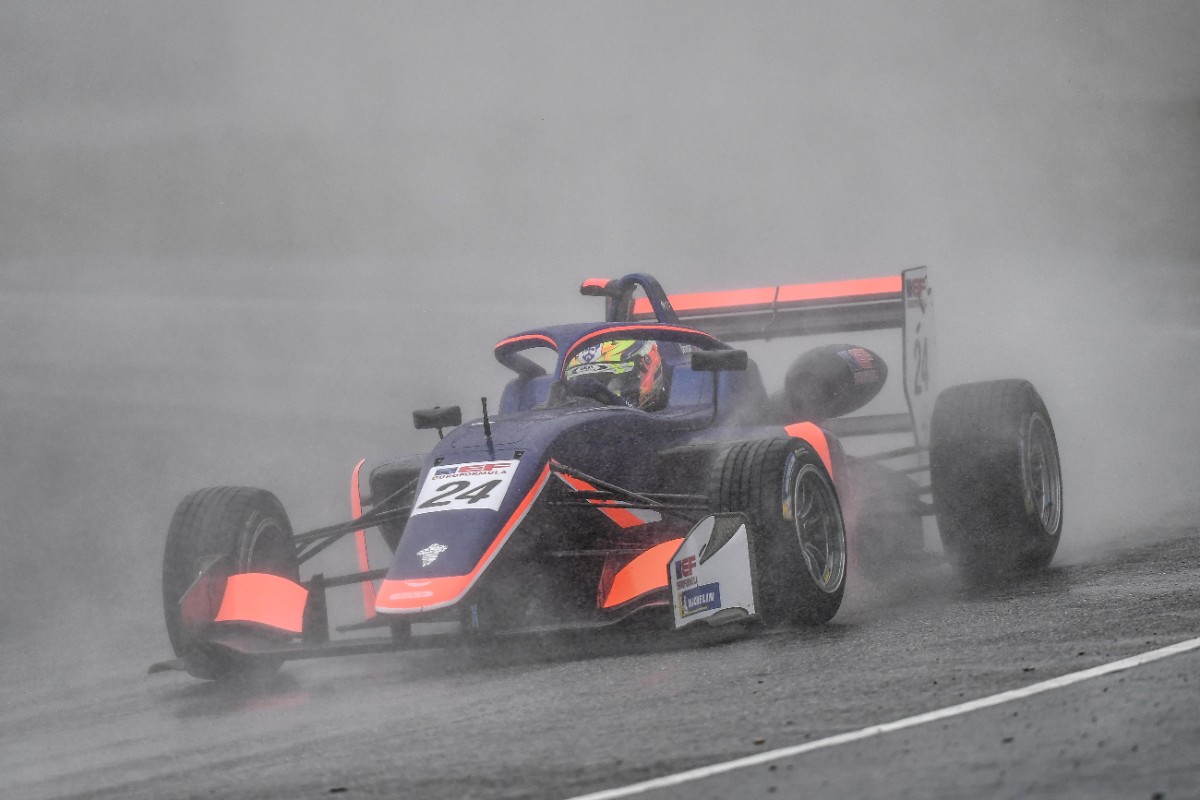 3. Ben Barnicoat
3. Ben Barnicoat
McLaren factory driver and former single-seater racer Barnicoat got called up by Carlin to race at Mugello, and demonstrated exactly what the world had been missing when he moved into sportscars after a single year in FIA European F3 back in 2015. He was second fastest in free practice, and disappointed to be only sixth in Q1. He was the raciest in the wet first race and made it to the podium though, then used all his experience to take pole and win the following day. There was a possibility he could have made a second appearance but that didn’t happen, and single-seaters’ loss is sportscars gain.
2. Lukas Dunner
On dent of having two seasons of Euroformula, and leaving the question of what if on the weekends he was absent, Dunner takes second place on this list. He did have a downturn under pressure at Barcelona, but was otherwise Ye’s match. He didn’t have as many spell-binding performances as his rival either, but then he came into the year without a single-seater win to his name and so victories was new and long-awaited ground for Dunner. Over inn FIA F3 he struggled, but then so did Ye in 2019 so he can’t be marked down for it.
1. Yifei Ye
A season that includes 11 wins, 13 qualifying-topping performances and 12 fastest laps is definitely the one of a champion, and on many occasions Ye was simply unbeatable. An otherwise unquestionable first place on this list does get brought back by how close Dunner was to him much of the time, and that when Ye did come under some pressure his defending wasn’t always the cleanest. However, it was a season where he improved in many areas and after losing out on the Eurocup title at Barcelona in 2018 and then having a torrid time there in FIA F3 in ’19, his 2020 bounceback was very impressive.
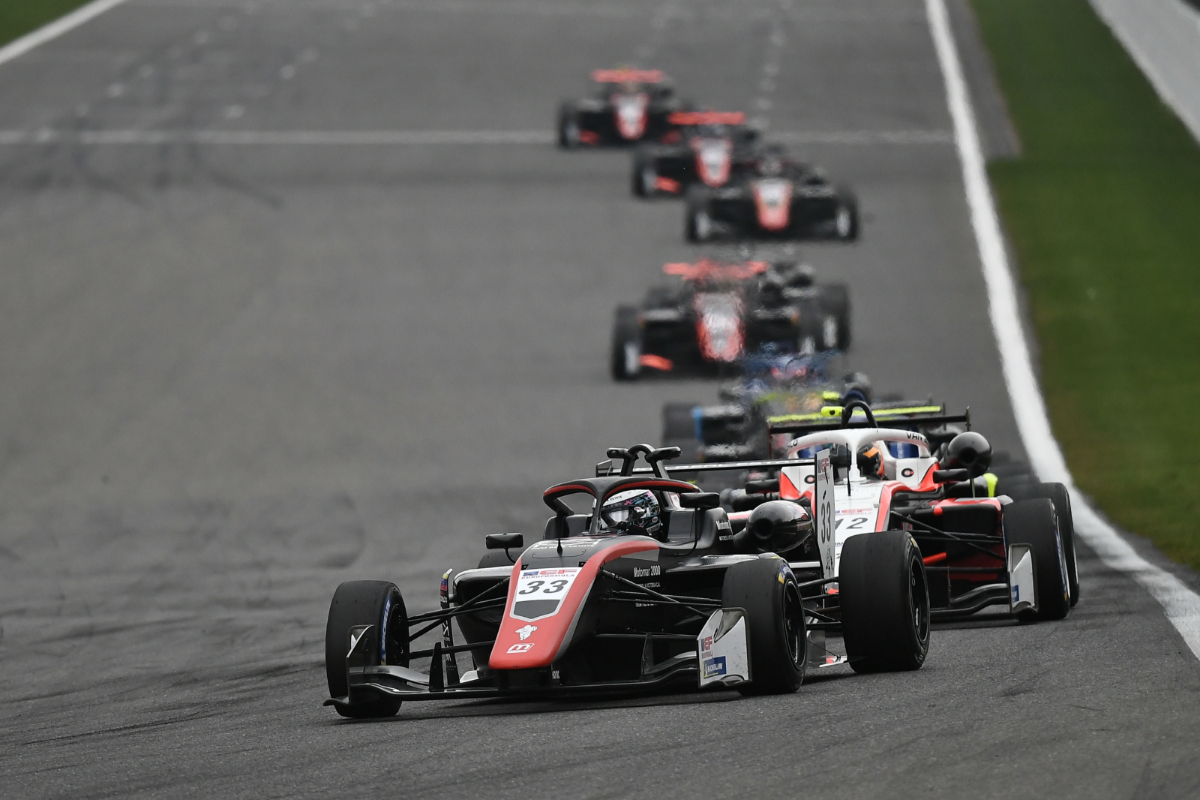 The rest
The rest
Manuel Maldonado could be stellar on his day but also overly messy on others, and the same can be said of Carlin’s Zane Maloney, who debuted as the reigning British F4 champion. His season was also hampered by mechanical issues, but the inclusion of Barnicoat at Mugello was a direct response to the frustrating season Maloney had been having with the Dallara 320 car. His Israeli team-mate Ido Cohen fared better, but wasn’t as quick, and kept his nose clean to earn two podiums at Spa along with Drivex School’s similarly consistent and sometimes rapid rookie Glenn van Berlo.
Andreas and Sebastian Estner clearly had the pace at many of the tracks, but just could not put it together in the races and often lost spots on the opening lap. Both claimed podiums, and the older brother Andreas was third in the points, but it was definitely a question of what could have been for both.
Cameron Das returned to Euroformula again but only made the podium once with Motopark, while Ayrton Simmons‘ half-season with Double R didn’t attract the same results but was definitely character-building and laid down important foundations for if he is to return in 2021. Rui Andrade looks like he could do the same with CryptoTower, and will need to be aiming for a first podium if he goes for a third season in the championship.
More on Euroformula
FIA F3 and Euroformula teams continue winter testing at Algarve
The exciting oversight that could rob top talents of a F1 future
Euroformula to race at Imola in 2021, opts for single Winter Series event
Pau Grand Prix organiser calls off next year’s race
Macau GP emerges as likely addition to 2021 Euroformula calendar
The McLaren super-sub who answered a three-year long ‘what if?’
Points tables
| 14 races where Dunner was present | Four races where Dunner was absent |
|---|---|
| 1 Yifei Ye 286 2 Lukas Dunner 248 3 Niklas Krutten 132 4 Andreas Estner 130 5 Cameron Das 123 6 Manuel Maldonado 86 7 Ido Cohen 76 8 Glenn van Berlo 61 9 Louis Foster 57 10 Ben Barnicoat 41 |
1 Yifei Ye 108 2 Manuel Maldonado 54 3 Sebastian Estner 52 4 Andreas Estner 48 5 Ido Cohen 38 6 Ayrton Simmons 28 7 Zane Maloney 27 8 Niklas Krutten 24 9 Glenn van Berlo 20 10 Alexandre Bardinon 6 |